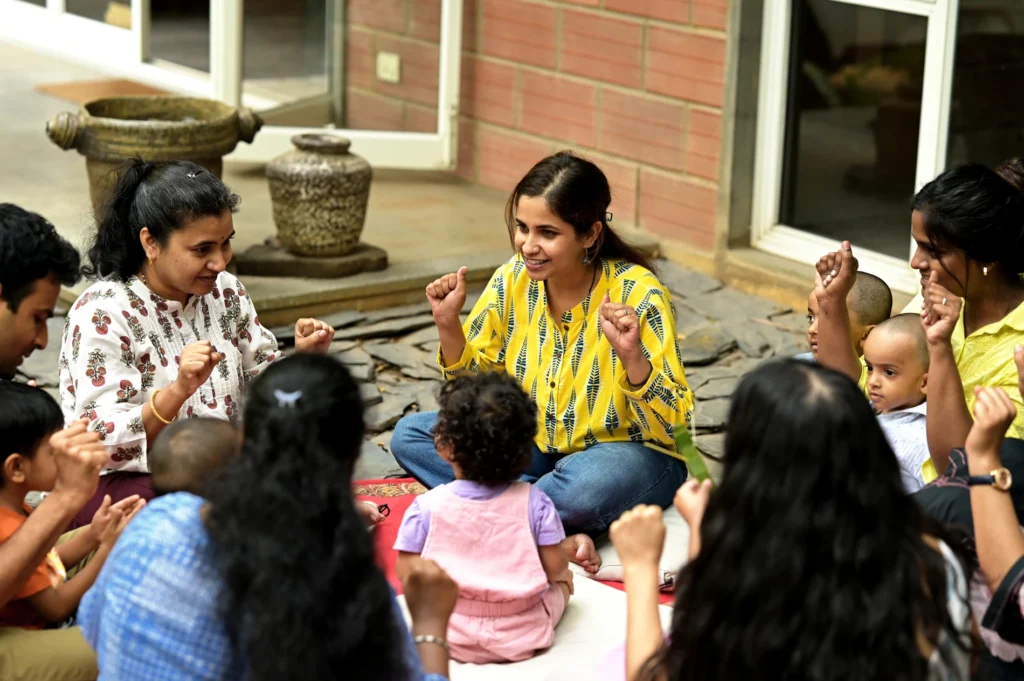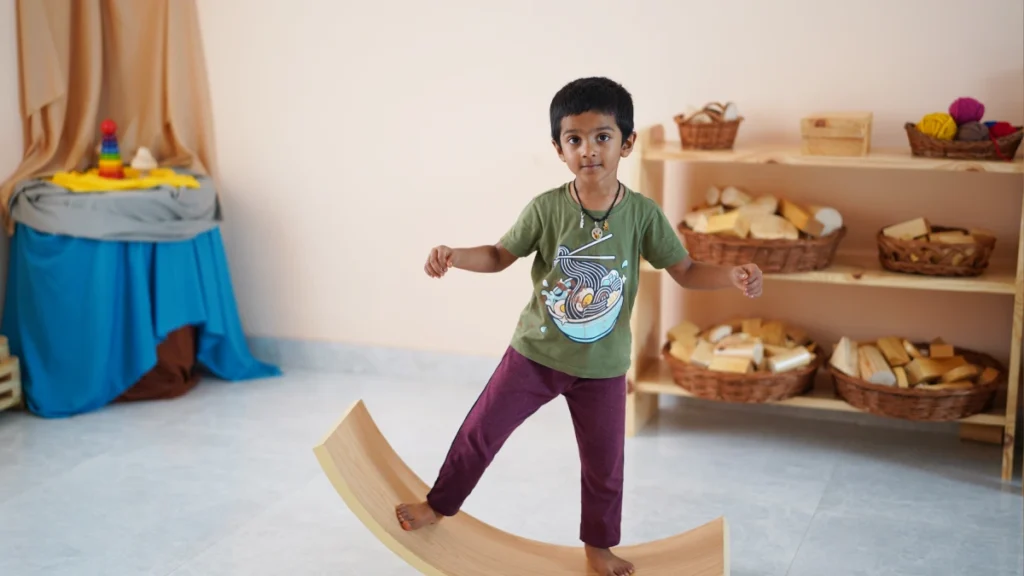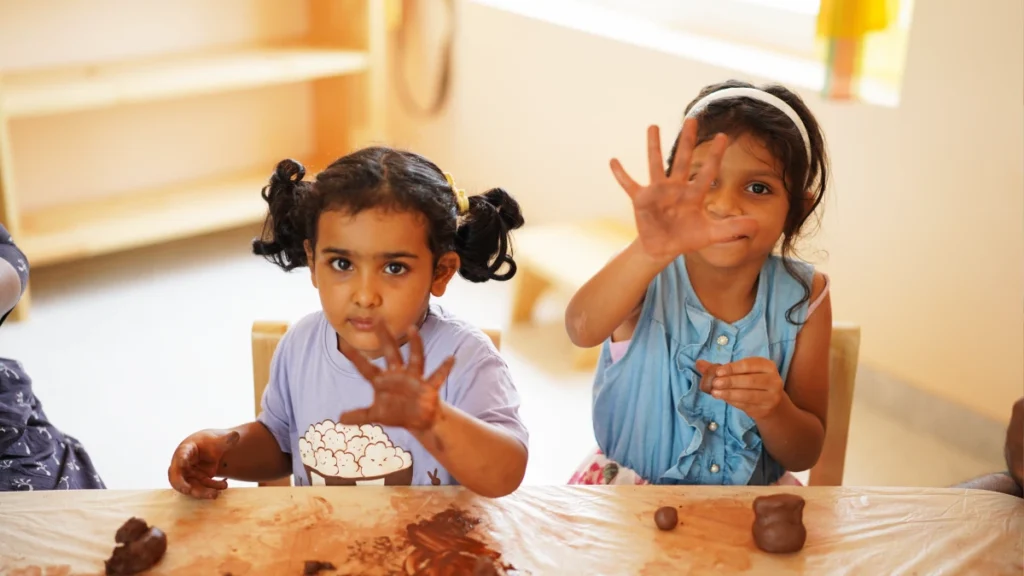Waldorf education has often been viewed with curiosity and, at times, misinterpretation, and while it continues to grow across the world, certain myths still cloud its essence. Families encountering this path for the first time sometimes wonder whether it is relevant, rigorous, and practical in today’s world.
In reality, this education honours childhood through rhythm, imagination, reverence, and purposeful activity, thereby preparing children for both intellectual clarity and inner resilience. By addressing these misunderstandings, one begins to see how such an approach nurtures the head, the heart, and the hands in harmonious balance.
Myth 1: Waldorf education leaves children academically behind
A common myth suggests that children fall behind academically because reading and writing are introduced later than in conventional settings. In consideration of this, it is important to understand that the unhurried rhythm is not a delay but an alignment with developmental readiness. Young children first meet learning through story, movement, imitation, and song, thereby strengthening memory and imagination before formal instruction begins. Eventually, when literacy is introduced, they carry with them not fatigue but curiosity, progressing with joy and confidence, and developing a genuine love for learning that endures.

Myth 2: The learning is too unstructured
Another misunderstanding is that the home-like classroom lacks structure. To this end, one must look closely at the rhythm that steers and supports the environment. Warm colours, natural textures, and daily rituals create safety and belonging, while purposeful tasks build inner discipline. As children sweep, fold, garden, or sing together, they find both freedom and responsibility within a nurturing framework. What appears as unstructured freedom is in truth a balance between guidance and trust, through which resilience and responsibility quietly take root.
Myth 3: Repetition stifles creativity
Some believe that repetition diminishes creativity or stifles initiative. That being so, repetition in this approach is intentional, because children thrive when rhythm steadies their daily and seasonal experience. Verses, songs, and familiar gestures offer security, while gentle variation allows imagination to flourish. Just as the cycle of seasons carries renewal, rhythm in the classroom creates both comfort and freedom. Eventually, children participate with increasing confidence, finding in repetition not monotony but a living structure that strengthens memory and will.

Myth 4: Waldorf avoids technology and leaves children unprepared
There is a perception that Waldorf schools neglect technology and leave children unprepared for modern life. In reality, the early emphasis on sensory-rich activity lays the groundwork for discernment and balanced use of tools later. As they knead dough, paint with watercolours, or work with wool, the senses are nourished and the will is strengthened. These experiences cultivate patience, dexterity, and perseverance, thereby preparing a foundation for digital literacy when it is introduced thoughtfully. Far from rejection, this approach is a careful preparation for wise and conscious engagement with technology.
Myth 5: Free play is not real learning

Free play is often mistaken to be unstructured and meaningless, yet in truth it is the child’s purposeful work. Through open-ended play with natural materials, children experience and explore language, problem-solving, cooperation, and creativity. In their imagination, wooden blocks may become castles, a cloth may become a river, and dolls may carry stories of care. In consideration of this, one sees that play is not a distraction from learning but a gateway into thinking and creativity. As they play, children prepare for intellectual work with joy and imagination.
Myth 6: Waldorf does not prepare children from real life
Some argue that this educational approach shelters children from reality. On the contrary, it is not withdrawal but a deep engagement with life through gratitude and responsibility. Stories, festivals, and purposeful work cultivate courage, compassion, and inner strength. Eventually, this quiet reverence grows into resilience, enabling children to meet life with clarity and calmness. In revering what is beautiful, true, and good, they find the resources to face difficulty with moral strength and courage.
Myth 7: Artistic and nature-based activities distract academic rigour
It is sometimes assumed that artistic and nature-based activities sideline “real” and “serious” academics. Yet, in practice, art and nature, seamlessly woven into lessons, become pathways to intellectual rigour. Geometry is experienced through form drawing, history through drama, and science through farm work or nature observation. As they garden, paint, sing, and build, children discover that knowledge is not abstract but alive, and thereby they learn to carry ideas into life with imagination and purpose.

Myth 8: Mixed-age classrooms disadvantage some children
A further myth is that mixed-age kindergartens hold older children back or leave younger ones overlooked. The reality is quite the opposite. Younger children find models to imitate, while older ones cultivate patience, care, and leadership. In this living community, learning unfolds as it does in family life, where every child grows within a web of support. Eventually, both younger and older thrive together, discovering social balance and a sense of belonging that extends into later years.
Myth 9: Waldorf is impractical in today’s world
Some believe that this education is not practical in a competitive world. In truth, preparedness here is measured not only by achievement but by the fullness of being able to think, to feel, and to act with harmony. Waldorf students often demonstrate adaptability, empathy, and clarity, qualities that endure far beyond examinations. To this end, Waldorf education offers a lifelong preparation for meaningful engagement with the world.

Myth 10: Waldorf education is only for a privileged few
Another common misunderstanding is that Waldorf education is an exclusive model suited only to certain families or circumstances. In reality, the principles of reverence, rhythm, imagination, and sensory-rich learning are universal, belonging to the needs of every child. Schools inspired by this path adapt to diverse cultural, social, and community contexts while holding firmly to the sanctity of childhood. Eventually, it becomes clear that the essence of this philosophy is not elitism but inclusivity, for every child benefits from being nurtured in wholeness and guided with warmth.
Conclusion
When myths are dispelled and overcome, one begins to see that Waldorf education is neither impractical nor complex but deeply human and age-appropriate. Rhythm, play, imagination, reverence, and sensory-rich learning are not luxuries but necessities for healthy growth. In this way, the child is nurtured in wholeness and guided with warmth, so that education becomes not hurried instruction but a journey towards lifelong learning, balance, and inner freedom.








